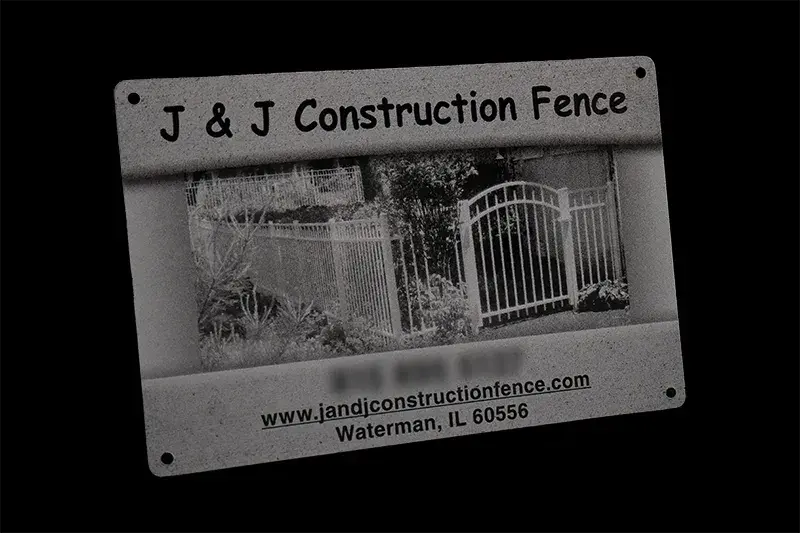Fence signage is an essential communication tool, serving a purpose very similar to ID plates on equipment. However, while ID plates usually convey safety and operational details, fence signage often shares information like contractor details, company information, access restrictions, or caution notices. Whether the sign is for advertising or directives, effective design and installation of the fence signage can make all the difference.
Here are a few tips on designing fence signage with creativity and practicality!
1. Keep these Key Design Elements in Mind for Fence Signage
While it might seem obvious, these 6 design tips can make all the difference in the success of your signage!
- Logical Layout: Organize your information in the order of importance. Use large, easy-to-read text, and focus on what's essential.
- Simple, Clean Design: Ensure your graphics and text contrast well with the background for maximum visibility. Don't overcomplicate it!
- Readable Typography: Choose on or two fonts with uniform shapes and minimal embellishments for clarity. Depending on the goal of your sign, a good option is to stick with the font or fonts identified in your branding guidelines.
- Appropriate Sizing: Remember, bigger is better. Each inch of letter height provides approximately 10 feet of readability!
- Effective Use of Color: A bold, yet simple color palette will enhance your sign's readability and draw attention. Again, don't overcomplicate it!
- Clear Labels: Ensure all information, like company names, phone numbers, or instructions are clearly labeled! Clearly identifying this information can help avoid any potential confusion.
2. Use Your Fence Signage for a Branding Boost!
Fence signage can also serve as a great branding tool, giving your company increased visibility and leave a lasting impression on those that see it. Consider this:
- Size and Shape: Depending on the goal of your sign, you can use a standard shape like a rectangle or opt for a unique design to stand out! But remember to keep your text and graphics legible.
- Logo Placement and White Space: Position your logo prominently, allowing enough white space for a clean, uncluttered look.
- Add Color for Impact: Use color strategically to emphasize logos or key details, making your signage more recognizable. But, like we mentioned earlier, use it effectively! Too much color can be overwhelming and create confusion.
3. Include Eye-Catching Enhancements
To make your signage even more durable and visually striking, consider:
- Embossed Graphics or Text: Add permanent dimension and durability.
- Borders: Add an embossed border to provide a unique tactile and visual interest.
For more information on including embossing in your product identification or fence signage designs, click here to read our free eBook!
4. Proper Attachment is Just as Important for Effective Fence Signage!
Selecting the right attachment method ensures your signs remain secure - whether temporary or permanent. Like we've said before, if your sign is face down on the ground, it's worthless. Avoid any potential risk with proper attachment!
- Rivets, Screws, or Ties: These types of attachment methods are ideal for things like chain-link fences. Zip ties or screws work well for temporary signs, like at a construction zone. While rivets will ensure long-term durability, like signage around a school or park.
- Adhesive: For fences with larger surface area, adhesive backings can provide a simple peel-and-stick solution that will stand up in outdoor conditions.
How Can We Help You?
Fence signage can be a cost-effective way to advertise your company and provide critical information to anyone who would need it. By focusing on clear design, bold branding, and proper installation - you can ensure your signs make a lasting impression while meeting practical needs!
Reach out if you'd like more information or to get started on a quote!


